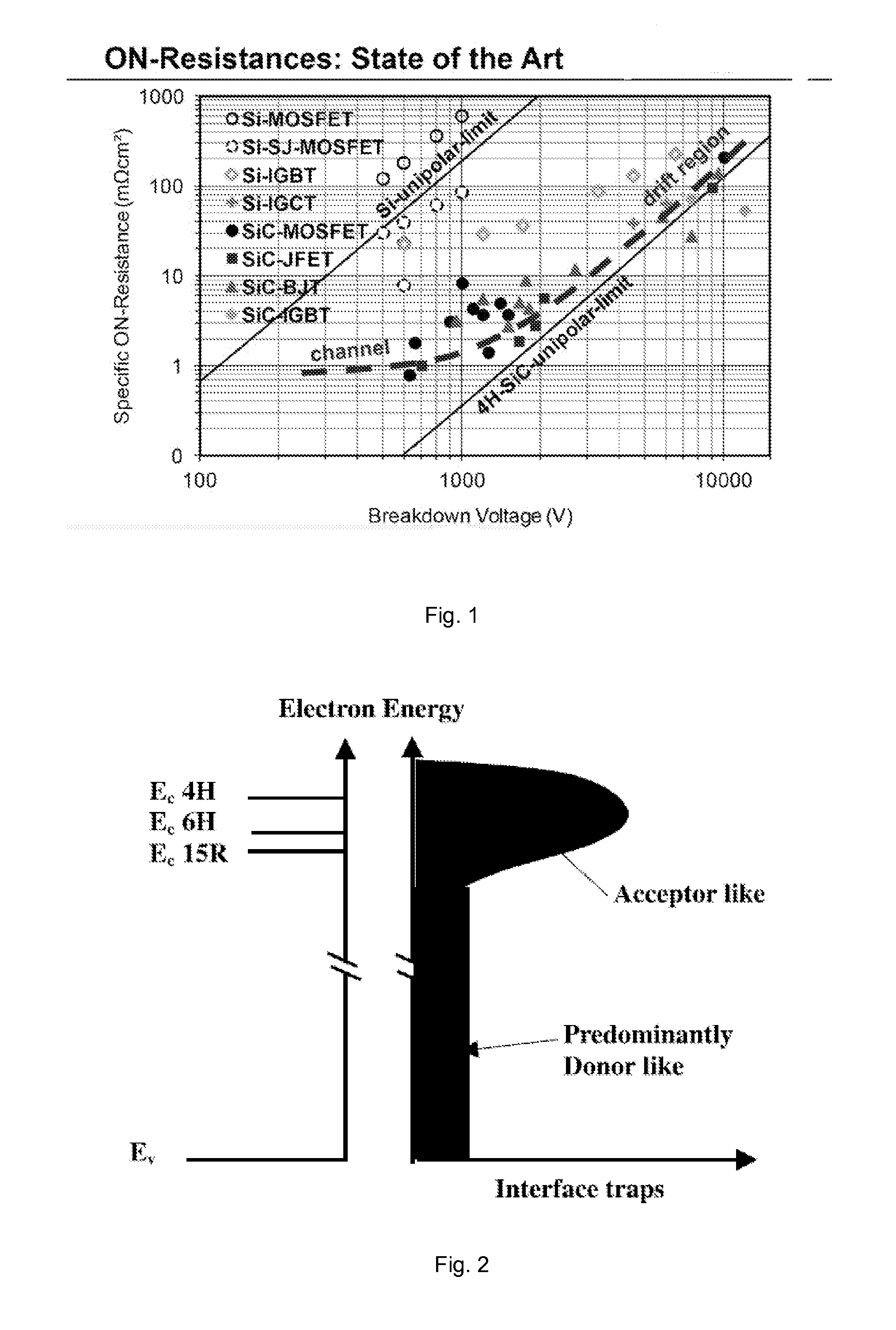3C-SiC TRANSISTOR
a technology of 3c-sic transistor and semiconductor transistor, which is applied in the direction of thyristor, basic electric elements, electric devices, etc., can solve the problems of reducing increasing the complexity of the device, and lowering the switching speed of an igbt. , to achieve the effect of reducing the limit of the sic unipolar drift region and low channel resistan
- Summary
- Abstract
- Description
- Claims
- Application Information
AI Technical Summary
Benefits of technology
Problems solved by technology
Method used
Image
Examples
Embodiment Construction
[0041]Referring to FIG. 3, an example of a vertical power semiconductor transistor 100 in the form of an insulated gate bipolar transistor (IGBT) is shown. The transistor 100 has first and second 3-step cubic silicon carbide (3C-SiC) epitaxial layers 120, 130 grown using the process described in WO2013061047 from which the present application claims the continuation in part relationship. The silicon carbide epitaxial layers 120, 130 include a heavily-doped p-type layer 120 which is supported on a p− type silicon substrate 110, and a lightly-doped n-type layer 130 which provides a drift region and which is supported on the p-type silicon carbide layer 120. The first epitaxial layer 120 provides a p-type collector. P-type wells 140 at the surface 160 of the epitaxial layer 130 provide body regions 140. N-type wells 150 within the p-type wells 140 provide contact regions and provide emitters. The body region 140 and the contact region 150 can be formed using 3C-SiC material. A channel ...
PUM
 Login to View More
Login to View More Abstract
Description
Claims
Application Information
 Login to View More
Login to View More - R&D
- Intellectual Property
- Life Sciences
- Materials
- Tech Scout
- Unparalleled Data Quality
- Higher Quality Content
- 60% Fewer Hallucinations
Browse by: Latest US Patents, China's latest patents, Technical Efficacy Thesaurus, Application Domain, Technology Topic, Popular Technical Reports.
© 2025 PatSnap. All rights reserved.Legal|Privacy policy|Modern Slavery Act Transparency Statement|Sitemap|About US| Contact US: help@patsnap.com



